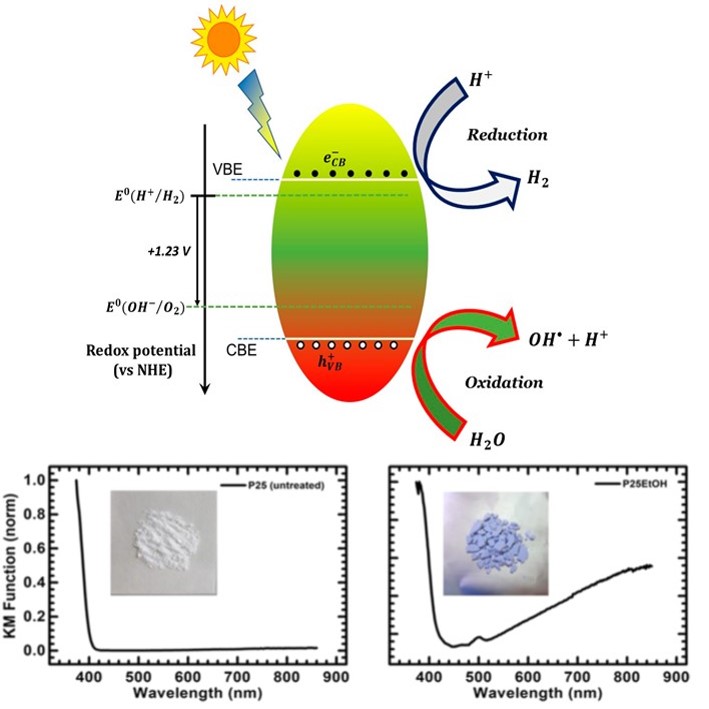Description of the activity
The photocatalytic properties of several semiconductor nanostructures can be exploitable to tackle
some of the most important challenges in modern society, such as environmental and energy issues. Notable examples are CO2 photoreduction, pollutant removal and pollution mitigation in water, hydrogen production via water splitting or via photo-reforming of alcohols and bactericidal activity.
These applications rest on the photophysical processes in the mentioned materials, and more precisely on how and how many free charges are produced near the surface of the nanoparticle and on how many of them will reach the surface to transform (via oxidation-reduction reaction) the reactants. These processes are ruled by the recombination pathways of the material.
This activity line basically focuses on studying such these recombination pathways in specific photocatalysts, aiming to shade light on the photo-transformative processes. The main tools involved are variants of photoluminescence (PL) spectroscopy, due to its sensitivity to surface modifications (e.g. chemical reactions, molecular adsorption) and to recombination processes. The analyses are complemented by other optical and electro-optical techniques (e.g. low-temperature PL, time-resolved PL, surface potential and surface second harmonic generation measurements).

Involved personnel
National and International Collaborations
- Istituto di Scienze e Tecnologie per l’Energia e la Mobilità Sostenibili (STEMS), CNR;
- Institute of Nanostructured Materials (ISMN), CNR;
- Palacký University Olomouc (Regional Centre of Advanced Technologies and Materials).
Instrumentation/facilities
- Setup for excitation-resolved photoluminescence (PLE);
- Low-temperature (10 K) photoluminescence;
- Surface second harmonic generation spectroscopy system;
- Potentiostat/galvanostat;
- Pulsed laser system for time-resolved photoluminescence measurements;
- Photodegradation tests.
